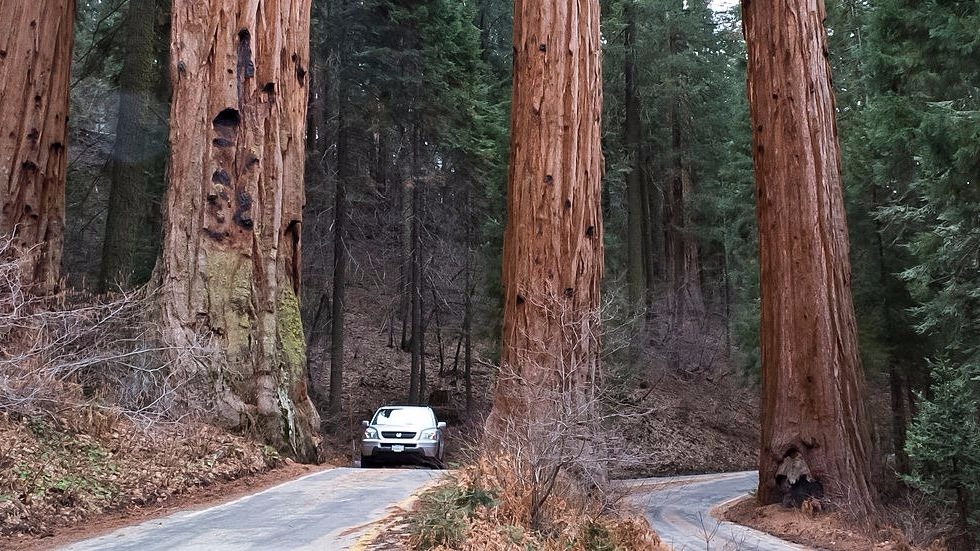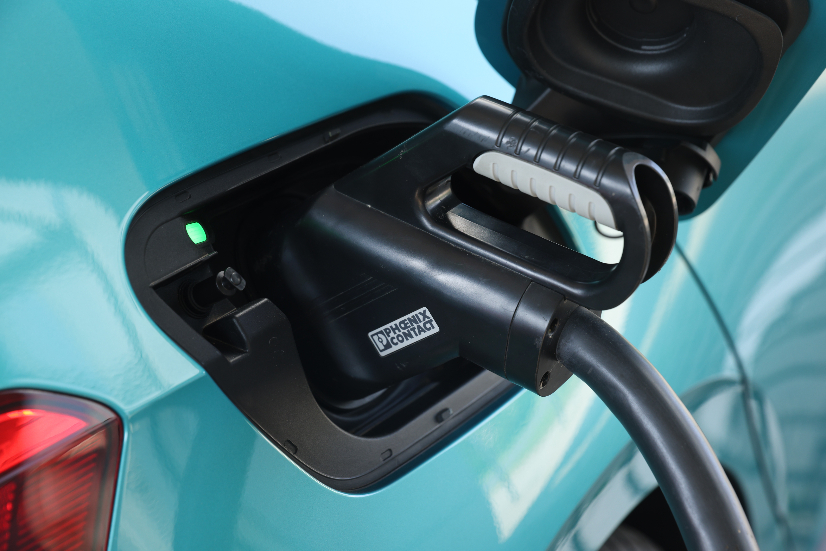Equilibrium/Sustainability — Volcanic eruption triggered by heavy rains
Today is Tuesday. Welcome to Equilibrium, a newsletter that tracks the growing global battle over the future of sustainability. Subscribe here: digital-staging.thehill.com/newsletter-signup.
Thunderous rains were responsible for the deadly eruption that killed at least 22 people near Indonesia’s Mount Semeru over the weekend, nonprofit journalism site The Conversation reported.
The rain collapsed the stony “lava dome” that plugged the peak of the already rumbling volcano, with effects similar to shaking up a fizzy drink and removing the cap, according to The Conversation.
The fatal eruption also damaged 3,000 buildings, while blanketing some villages in up to 13 feet (4 meters) of volcanic debris — a disaster that highlights the risk to the roughly 1 billion people worldwide who live within 60 miles of an active volcano.
Today we’re exploring another kind of hidden risk: the fuel contamination crisis that is sickening people at the Navy’s base at Pearl Harbor. Then we look at a man who wants to plant California redwoods worldwide — and why some of the benefits of forests may be overhyped.
For Equilibrium, we are Saul Elbein and Sharon Udasin. Please send tips or comments to Saul at selbein@digital-staging.thehill.com or Sharon at sudasin@digital-staging.thehill.com. Follow us on Twitter: @saul_elbein and @sharonudasin.
Let’s get to it.
Hawaii orders Navy to fix water contamination

Hawaii’s Department of Health issued an order Monday night requiring the Navy to take immediate steps to rectify a water contamination crisis at the Joint Base Pearl Harbor-Hickam, which has forced more than 700 people to evacuate their homes and left many residents reporting gastrointestinal symptoms, headaches and skin-related concerns, according to CNN.
The Navy shut down its Red Hill Bulk Fuel Storage Facility, built during World War II, on Nov. 28 — and then confirmed that testing had revealed petroleum hydrocarbons and vapors in the Red Hill well water on Friday, CNN reported.
Where exactly is the facility? The site, located just east of Pearl Harbor, sits about 100 feet above the Red Hill aquifer, according to CNN. That aquifer supplies nearly 20 percent of Honolulu’s drinking water, The Associated Press reported.
The facility contains 20 steel-lined tanks — that can store up to 250 million gallons of fuel — encased in concrete and stored inside a volcanic mountain ridge, according to the AP. Concerned about the vulnerability of above-ground tanks to attacks, the Roosevelt administration had opted to situate the equipment underground, the AP reported.
What caused the contamination? No one is sure at this point, but the Navy did confirm a petroleum leak after conducting samples at Red Hill well. Just seven months ago, another contamination incident occurred at Red Hill when more than 1,600 gallons of jet fuel were released from a facility pipeline — though not from the storage tanks, CNN reported.
Nonetheless, officials said they were getting close to pinpointing the root of the problem and that following an ongoing investigation, the Navy would adopt water safety precautions, the AP reported.
But nearly 1,000 military households have recently complained that their water was contaminated, with some noticing fuel odors and others enduring symptoms like cramps and vomiting after consuming it, The Hill reported, citing the AP.
Pets were hurt, too. Some animals became so ill that they needed to be euthanized, Military.com reported. A veterinarian said during a town hall meeting that a nearby clinic had treated 70-80 animals for hydrocarbon poisoning, according to Military.com.
Hawaii orders action: Hawaii’s Department of Health issued a Health Order on Monday night, requiring the Navy “to immediately suspend operations at the Red Hill Bulk Fuel Storage Facility,” Gov. David Ige (D) tweeted.
The Navy also must “take immediate steps to install a drinking water treatment system at the Red Hill Shaft, submit a work plan to assess system integrity, and within 30 days – must defuel the Red Hill underground storage tanks,” he wrote.
NAVY APOLOGIZES
The Navy apologizes: The Navy announced on Monday that it would suspend use of the facility, while Navy Secretary Carlos Del Toro traveled to Pearl Harbor and told reporters he was apologizing to residents for this “horrible, horrible tragedy,” the AP reported.
The Department of Defense has spent more than $200 million renovating the facility and carrying out environmental testing since 2006, the AP reported, citing the Navy.
Lost in communication: During a Sunday night town hall meeting, Del Toro and Chief of Naval Operations Add. Michael Gilday acknowledged that the service had “stumbled” in its communications and promised to build a “water system that they can completely trust,” Military.com reported.
“I deeply apologize to each and every one of you and to the people of Hawaii that this incident may have been destructive to your lives in any way,” Del Toro told the families, according to Military.com.
“We have put you in an unsafe condition, and that needs to be corrected,” Gilday added.
Last words: Moving forward, Hawaii’s governor said that the state’s “wellbeing and the safety of our residents, including military families, must come first,” in his Twitter thread.
“We cannot have national security without ensuring public health and safety,” Ige added. “There are still important questions that need to be answered and the [Health] Order will help get there.”
Study: Planting sequoias not a ‘cure-all’

Tree planting and forest conservation have become popular sustainability solutions for an age of drought and extreme weather — with one Michigan botanist touting the California sequoias he’s cloning as “the solution to global climate change.”
But a series of new studies suggest that the picture is more complex and building up forests — particularly in the most human-dominated landscapes — may not be a cure-all for a warming planet.
Start at the root: A single unlikely sequoia — the species that makes up the soaring California redwoods — grows on a bluff above Lake Michigan, the lone survivor of a group of six brought back by a local couple from California, ABC13 news reported.
So? Despite being from the temperate coastal rainforest, “for 70 years Michigan winters, that tree has somehow survived on that high-bank property in extreme wind,” David Milarch, founder of the Archangel Ancient Tree Archive, told ABC13.
That gave Milarch an idea: To clone the oldest of the surviving old growth trees — which Milarch believes that, like that Michigan sequoia, have the best genes for resilience and longevity — and to distribute them throughout the world, regrowing millions of cloned elder trees on lands.
“We put seedlings from 3,000-year-old trees inside a sealed jar, and in two months, roots will form,” Milarch said.
He’s not the only one: The One Life One Tree project planted 500 sequoia saplings on an old timber plantation in Brecon, Wales, in June, the BBC reported.
The organization promises that each such tree — based on the size the species reaches in its native California — would cancel out a person’s lifetime carbon footprint.
Gareth Jones planted one for his late wife Lucy, an international education consultant who “travelled all over the world and she always felt that she was contributing to this carbon dioxide … So this is payback time,” he told the BBC.
Can sequoias grow in Wales? They can. A grove of them was planted up the road in Leighton in 1857 — which are now taller than 130 feet, the BBC reported.
A REALITY CHECK FOR SOME SUPPOSED FOREST BENEFITS
Effect on flooding may be oversold: While those sequoias may one day hold down a lot of carbon, another much-cited benefit of forests — that they moderate the large-scale flooding from extreme weather — may be exaggerated, according to a study from Trinity College Dublin.
Forests do help moderate flooding — but only in small storms, with flood heights remaining “well below the average” of a typical year, senior author Liwen Xiao said in a statement. For unusually large storms — at least in these specific landscapes in the British Isles — Xiao’s group found it didn’t much matter whether there were trees or not.
Then there’s methane: Trees like those giant sequoias hold down a lot of carbon. But in Amazonian wetlands, which generate planet-warming methane from the impact of decomposing underwater vegetation, trees are sucking up and venting methane into the atmosphere that would otherwise remain trapped underground, according to a recent paper out of Britain’s University of Birmingham.
This means methane emissions from wetland forests may be much higher than previously thought, lead author Vincent Gauci said in a statement.
The problem of people: Finally, forests may suffer from a problem faced by plants more generally — that in human-dominated landscapes, their evolution has been less able to keep pace with the rising temperature, according to a study from the University of California Santa Cruz.
Scientists had expected that plants’ phenology — the timing of seasonal cycles like blooming — would “adapt very quickly” to the shifts in seasons caused by climate change, lead author Yiluan Song said in a statement.
Nonetheless, Song explained, “there’s probably a limit to how much adaptation we can see,” with adaptation lagging the furthest in areas with the most people.
Takeaway: Sweeping conclusions drawn from single studies of specific regions may not be applicable to the entire world, as the precise benefits of planting trees are location dependent. One thing scientists do agree upon, however? That staving off flooding and other impacts of climate change hinges on the global effort to cut emissions.
Transport Tuesdays

A selection of electric and self-driving vehicle news from around the world.
Intel stock surges ahead of Mobileye IPO
- Intel shares soared on Tuesday following announcements that its Mobileye self-driving unit would go public in mid-2022, Barron’s reported. The move could value the Israeli company, which Intel acquired for $15 billion in 2017, at more than $50 billion, according to The Wall Street Journal.
- Mobileye, which specializes in chip-based cameras that run automated driving features, has tripled its revenues since Intel purchased the company, the Journal reported.
Electric vehicle demand threatens ‘last frontier’ of the Philippines
As demand rises for nickel — a key component of electric vehicle batteries — a mine that already “scars” a Philippines island forest is on the verge of expanding even further and threatening a fragile ecosystem, NBC reported. The 270-mile island, Palawan, is a UNESCO Man and Biosphere Reserve and is known as the Philippines’s “last frontier.”
- The mine is jeopardizing not only the forest, but also the rice paddies that provide income for the Indigenous Palawan tribe members who live in the region, NBC reported.
Left out of Biden electric vehicle tax credits, Tesla and Mexico lobby against them
- The Mexican government is lobbying hard against the Biden Administration’s proposed tax credits for American-made electric vehicles, which it says violates the United States-Mexico-Canada (USMCA) trade deal and excludes 1 million Mexican workers from potential jobs, The Hill reported.
- Elon Musk of Tesla — whose products don’t qualify for the tax-credit because they aren’t union made — panned the roughly $2 trillion Build Back Better bill entirely, despite its support for electric vehicle infrastructure. “Do we need support for gas stations? We don’t. Delete it,” he said, according to The Wall Street Journal.
That’s it for today. Please visit The Hill’s sustainability section online for the web version of this newsletter and more stories. We’ll see you Wednesday.
Copyright 2024 Nexstar Media Inc. All rights reserved. This material may not be published, broadcast, rewritten, or redistributed..











